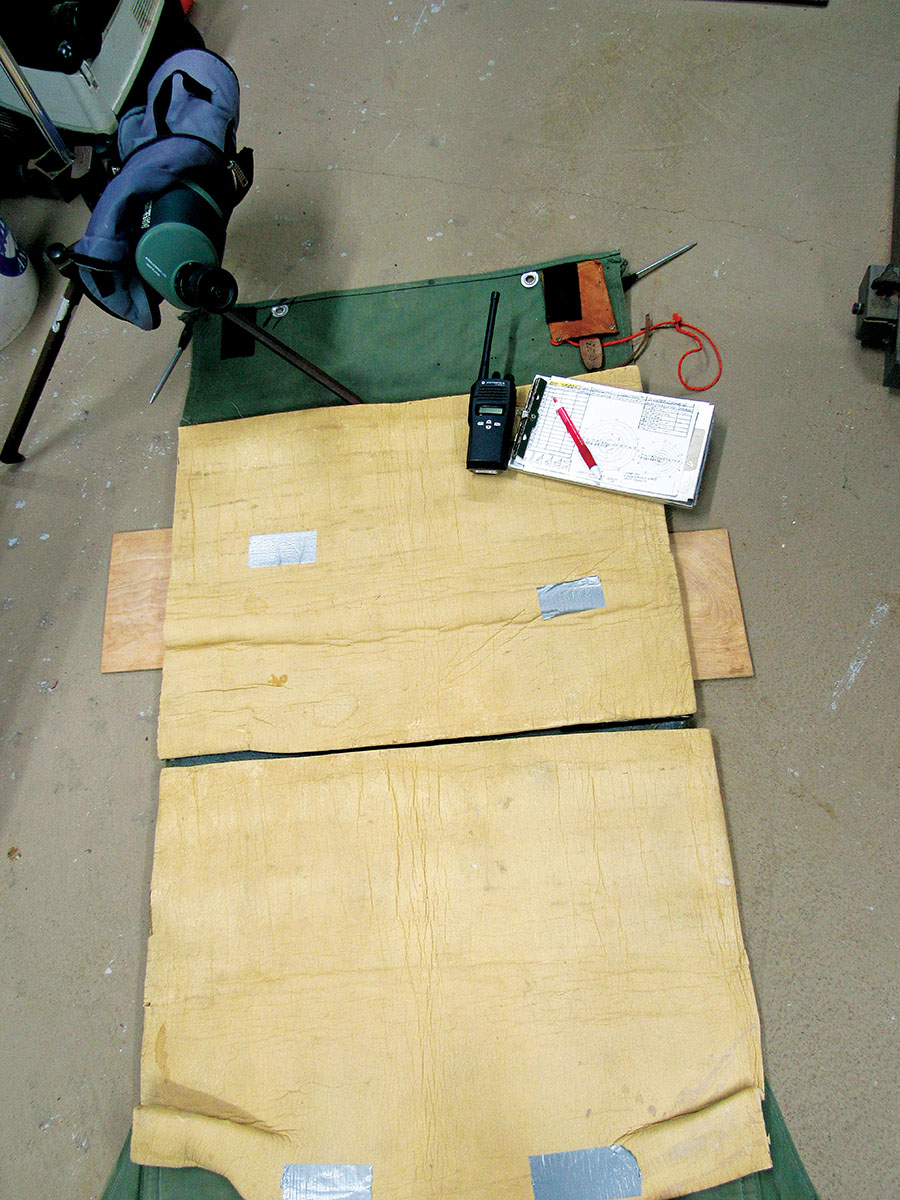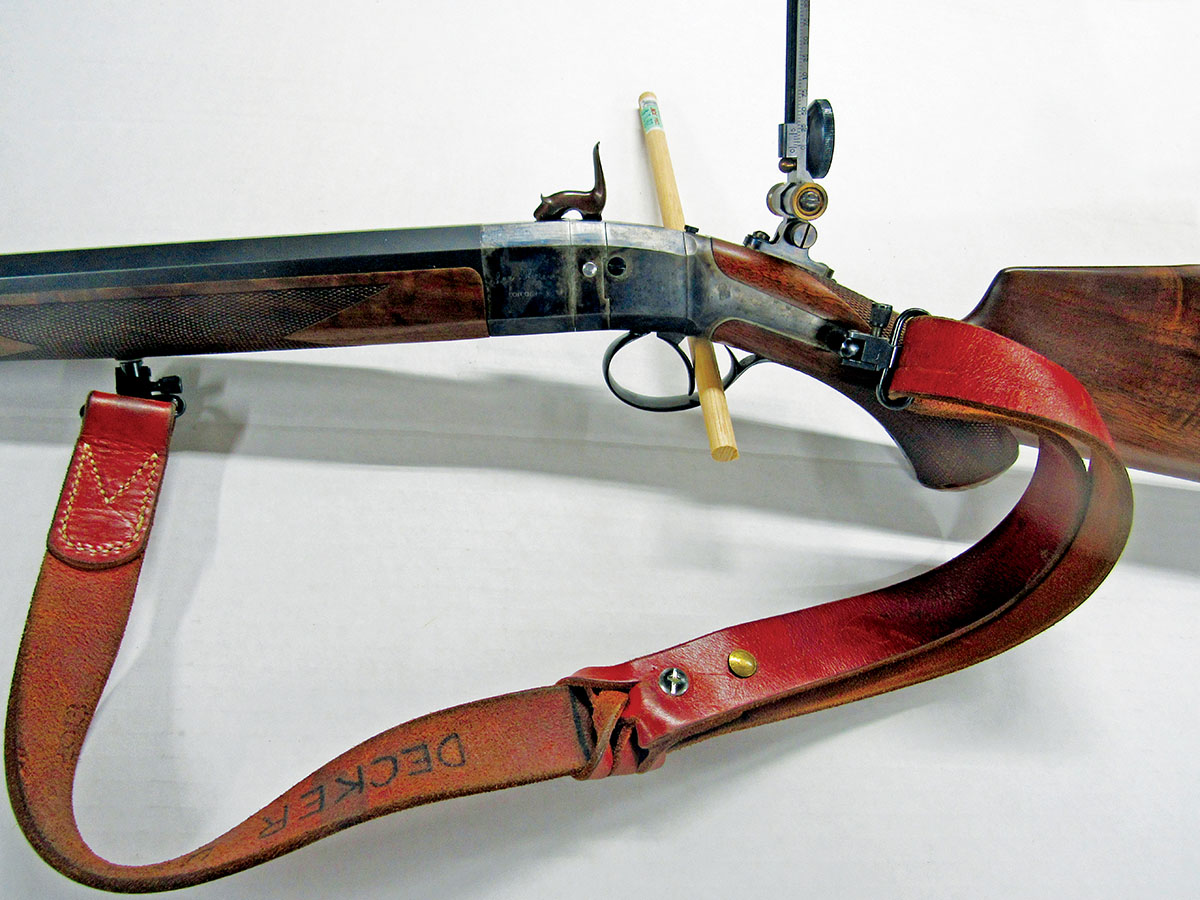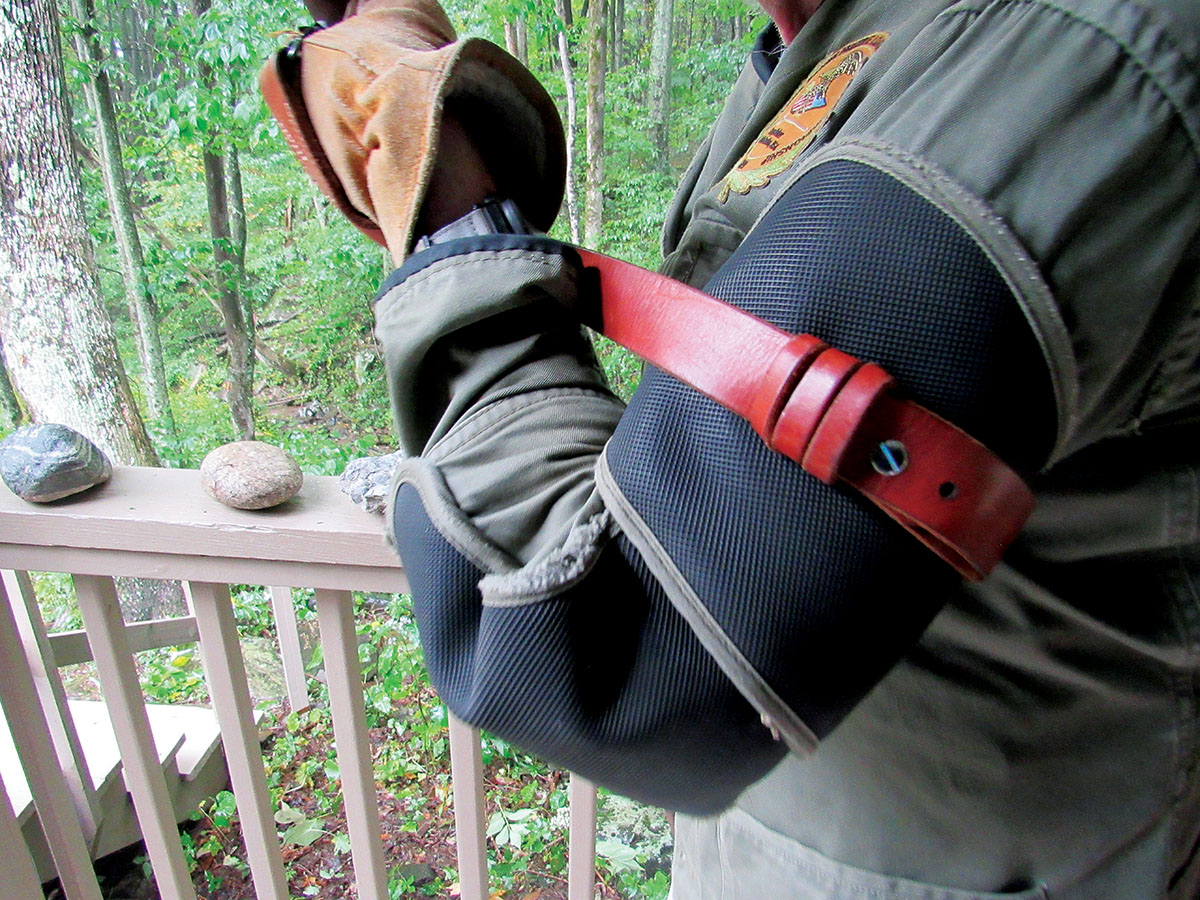Be More than a Wannabe Part IV
Shooting A Muzzleloader With A Sling
feature By: Ed Decker | December, 21

Slings shall be original or a reproduction of a contemporary type. Modern adjustable target type slings, including single-point slings, are forbidden.
Slings shall be manufactured from leather, canvas, or other suitable material available to the nineteenth-century. No modern material such as nylon may be used. No part of the sling may exceed 2.5 inches (63mm) in width or 0.25 inches (6mm) thickness.
Slings shall be attached to two positions on the rifle and not closer than eight inches (203mm) of each other, measured from the inside of the attachment points.
Sling attachments (fittings) may be added to original rifles, if desired, however these attachments shall be of the 1860s/1870s period styles (e.g., sling eye/swivel for hook) and cause no damage to the rifle.

Original military match rifles shall use original military-style swivels as usual for military rifle of the 1860s/1870s.
Reproduction rifles may be fitted with mechanical sling attachment points, including sling eyes/swivels, fitted to the stock, trigger guard or barrel.
The tying of slings to the trigger guard is not permitted.
It is not permitted to wrap the sling in such a way that it prevents equal tension being applied to the sling attachments on the rifle.
The type of sling I prefer is made by Montana Gun Slings. (Contact them at: montanagunslings.com or 406-853-6603.) It is made in such a way that wherever I put it, it stays without any fasteners. Great product, does not stretch, and stays put. If you really want to know how much a sling can help steady your shooting in the prone position, practice without a sling. I personally discovered that I could shoot better with a sling at long range rather than using a wrist rest. If every firing point I shot from is perfectly flat, I will shoot with a sling and wrist rest at long range. Shooting with a muzzleloader offers different challenges than shooting with a cartridge rifle because of having to get up and down between shots to clean and reload. The best way to regain a consistent position quickly after reloading is to have the mat marked for knee and elbow placement to keep shooters aligned on their target quicker
Starting with kneeling on your knees in exactly the same place each time while you get into your sling, lean forward and place your sling elbow on a marked spot on your mat, then rest your other elbow. Adjust your legs and feet the same way each time, bringing up your trigger side leg to give you better lung capacity and comfort. Every shooter is built differently. I am of medium build, with medium length arms, neck, face and weigh 160 pounds. Some shooters have long legs, arms, neck and a long face. I know one shooter who has such short arms he has to use a phone book under his left elbow to get the stock to reach his shoulder. Because of all different physiques of shooters, stocks need to be different lengths and the sling needs to be attached at different points. There is no “one size fits all.” Each person has to make the necessary adjustments to fit their body if they are ever going to shoot well. The length of pull on my rifle is 14¼ inches and that works for me with a shooting jacket and extra pad underneath my jacket. My forward sling attachment is where the screw is that holds my forearm on. My rear sling attachment is located 2½ inches back of the trigger on a post that protrudes 1¼ inches. The distance between these two points is 11½ inches.
When I get into my sling, I want my thumb and forefinger jammed tight between the stock and forward end of the sling to help keep pressure on the butt of the stock into my shoulder without having to hold it in place.

If your mat is laid out properly, at the correct angle to your target, knee location marked on your mat for when you kneel before getting into your sling, and elbow placement marked for when you get into position to shoot, you shouldn’t have to do much shifting your body around to be in a relaxed, no-strain position to shoot from. If you will check out your position during your prep period, so that when you aim at your target you are dead-on, it will save you a lot of time. If you’re not in perfect position, don’t fire the first shot, trying to muscle your shots. It’s best to take the time to adjust and catch up later.
One tip I have found very helpful is to take along some ¼-inch plywood squares, approximately 8x10 inches to slide under your mat to raise an elbow if the ground is not level or you’re in a slight dip. Take four along and you may need to use one or all of them depending on ground conditions.
Practice a lot at short range where you don’t have wind conditions to contend with and study a five-shot group. Adjust your position, your sling tension, check your hold and shoulder position, elbow location and see if any adjustments change your shot groups, until you think you have mastered the sling position. Don’t wear yourself out. Shoot a few shots, sit down, relax, drink some water and analyze your shots. You have to train your muscles to do what you need them to do. If you plan on shooting internationally, you will need to shoot “sling only” in all your matches, no cross sticks, sandbags or wrist rest. All your international competitors only shoot sling in practice and competition; that’s why they always beat the U.S. at midrange…until 2017.
When I took over as U.S. team captain, I required all shooters on the U.S. squad to shoot with a sling only, in all the muzzleloader competitions. Some shooters even gave up cartridge shooting and most shot muzzleloaders with sling only against cartridge shooters in preparation to compete against world competitors and it worked. Not everyone on the 2017 squad that went to Australia, abided by my request, but those who did, you could tell because they did well in the individual matches and made the mid- and long-range teams. We won the first midrange team match in the history of the MLAIC World Championships for the U.S. in 2017. We also won the long-range team match.
One last thought; shooting from a sling can get rough on the elbows. The best thing I have found is to tape them with wide athletic tape or duct tape. No amount of elbow pads will help because it’s the friction of your elbows moving against a piece of cloth, foam, etc., that causes blisters and bleeding. Arleen taught me this trick. She used to duct tape her hands when paddling whitewater canoe. It works better than gloves.
One of my readers has moved up to 300 yards now; he’s doing well and moving on to long range. He plans to shoot at Oak Ridge this fall in the Creedmoor match. I am hoping to go as well and I look forward meeting him. From zero to his first big match – that’s the way it’s done. Striving hard to BE MORE THAN A WANNABE.
The next session will be on shooting long range with a wrist rest.


